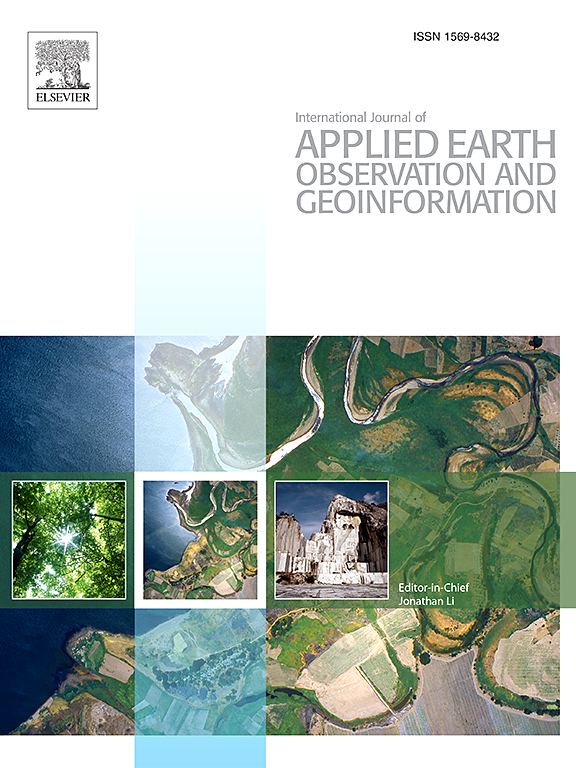Tree species classification using intensity patterns from individual tree point clouds
IF 7.6
Q1 REMOTE SENSING
International journal of applied earth observation and geoinformation : ITC journal
Pub Date : 2025-04-21
DOI:10.1016/j.jag.2025.104502
引用次数: 0
Abstract
Personal laser scanning has evolved into a cutting-edge technology for obtaining fast and accurate biometric measurements of individual trees in a forest. However, recent studies assessing tree species labels on single tree point clouds have been insufficiently accurate in complex forest ecosystems; moreover, explainability of machine-learning methods used in published studies has been insufficient. Whether the predictions of black-box models suffer from over-fitting or whether they are based on characteristic species traits often remains unclear. To solve this problem, we present a simple classifier combining random forest models with decision rules, trained on 9 common tree species in Central Europe. Explainable elements are a soft classifier on classification probabilities and detailed analysis of variable importance and minimal variable depth. The overall classification accuracy was 89.8% for nine species, with greater values for the four major species (spruce, pine, oak, and beech). Intensity measures in the upper tree section and tree geometry ratios were the most important predictors. The method proposed in this study can potentially be used to analyze forest ecosystems in more spatial detail by addressing species-specific research questions to an unprecedented degree.
利用单个树点云的强度模式进行树种分类
个人激光扫描技术已发展成为一项尖端技术,可用于快速、准确地测量森林中单棵树木的生物特征。然而,最近对单棵树木点云进行树种标签评估的研究在复杂的森林生态系统中不够准确;此外,已发表研究中使用的机器学习方法的可解释性也不足。黑盒子模型的预测是否存在过度拟合的问题,或者它们是否基于物种的特征特性,这些问题往往仍不清楚。为了解决这个问题,我们介绍了一种简单的分类器,它将随机森林模型与决策规则相结合,并在中欧的 9 种常见树种上进行了训练。可解释的要素包括分类概率软分类器以及对变量重要性和最小变量深度的详细分析。9 个树种的总体分类准确率为 89.8%,四个主要树种(云杉、松树、橡树和山毛榉)的分类准确率更高。树木上部的强度测量和树木几何比率是最重要的预测因素。本研究提出的方法可用于对森林生态系统进行更详细的空间分析,在前所未有的程度上解决特定物种的研究问题。
本文章由计算机程序翻译,如有差异,请以英文原文为准。
求助全文
约1分钟内获得全文
求助全文
来源期刊

International journal of applied earth observation and geoinformation : ITC journal
Global and Planetary Change, Management, Monitoring, Policy and Law, Earth-Surface Processes, Computers in Earth Sciences
CiteScore
12.00
自引率
0.00%
发文量
0
审稿时长
77 days
期刊介绍:
The International Journal of Applied Earth Observation and Geoinformation publishes original papers that utilize earth observation data for natural resource and environmental inventory and management. These data primarily originate from remote sensing platforms, including satellites and aircraft, supplemented by surface and subsurface measurements. Addressing natural resources such as forests, agricultural land, soils, and water, as well as environmental concerns like biodiversity, land degradation, and hazards, the journal explores conceptual and data-driven approaches. It covers geoinformation themes like capturing, databasing, visualization, interpretation, data quality, and spatial uncertainty.
 求助内容:
求助内容: 应助结果提醒方式:
应助结果提醒方式:


